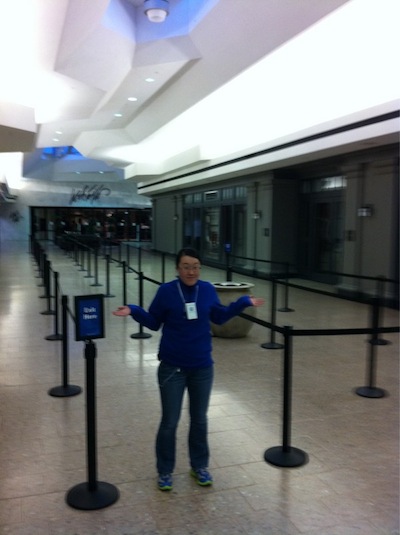Verizon's iPhone 4 public relations damage control says it all

Initial sales didn't meet expectations, and the company is stalling until its next earnings report -- perhaps hoping sales will surge meanwhile. Moreover, if Verizon Wireless sold 60 percent of initial iPhone sales online, as the CEO claims, the other 40 percent leads to a surprisingly small number.
On February 14, I asked: "Say, whatever happened to that 1 million Verizon iPhones sold announcement?" If first weekend demand was good, then surely somebody, either Apple or Verizon, would have released sales figures. After all, Apple could have scored a big, distracting PR coup just as Mobile World Congress was beginning. Instead, there was silence, which Verizon Wireless CEO Daniel Mead broke as the weekend started. He told the Wall Street Journal and Reuters that the iPhone 4 launch broke sales records. Funny thing, neither news organization actually quotes Mead about Verizon iPhone sales. They summarize instead. Now why is that? Regardless, Mead gives no actual sales numbers, which removes real credibility from his summarized claims. He defers revealing sales until Verizon's next quarterly earnings report.
If you recall, Apple and Verizon both prepared for long lines of anxious buyers. Instead, short lines of buyers greeted early store openings and extra staff on hand to receive the expected horde of buyers. Mead's summarized statements -- hey, Reuters and WSJ why is there no quote -- brushes off the long lines by stating that 60 percent of initial sales were online. "If we had not done online, you would have seen a much different flow in the pictures," Mead told Reuters. He refers to the hundreds of photos that popped up that morning all over the InterWebs showing few, in some cases no, people waiting to buy Verizon iPhone.
Do bloggers and journalists suffer memory loss? Surely June 2010 isn't that long ago to remember that AT&T sold out preorders, too, and still people lined up by the thousands per store to buy iPhone 4.
So, if 60 percent of sales are online and two people show up to buy Verizon iPhone, what exactly does that tell you about the number sold? If, for example, 40,000 people bought Verizon iPhone in shops over the opening weekend, then what is that -- 60,000 online orders? I merely throw out those numbers because the lines were small and the math is easy. That said, any accurate accounting of store sales would give a fairly accurate number of overall sales, by using the 60-40 method.
Let's crunch the numbers differently. Some analysts predicted that Verizon sold 500,000 iPhones during the initial preorder phase (which lasted just a couple hours before handsets sold out). Verizon opened online sales a day earlier than expected, so for easy math's sake, let's assume 100,000 more orders. So what? Launch weekend retail stores generated another 400,000 sales? Did you see lines indicating anything close to that number? Neither did I.
If there had been another 400,000 in-store sales, Apple or Verizon would almost certainly have announced 1 million sales after the weekend ended. Apple typically touts early sales, as it did with iPad (300,000 first day) and iPhone 4 (1.7 million first weekend). That 40 percent is the number every Apple Watcher and Wall Street analyst should be trying to figure out. They don't know, nor do I.
Mead's numberless interviews provide commentary enough on how relatively weak initial Verizon iPhone sales must be. Yesterday, Apple 2.0 blogger Philip Elmer-DeWitt made some astute observations in post: "Verizon still mum on iPhone sales." As he rightly observes about Mead reiterating claims first-day sales set a record: "This is a classic unanchored statistic. Without knowing what the previous record was, you can't pin down the new one." That's exactly the point of Mead's interviews -- to make sales seem high without reporting exactly what they are, which results in posts like this one from The Unofficial Apple Weblog: "Verizon CEO: iPhone 4 sales strong, more coming from Apple on LTE." Strong compared to what?
Something else: In the interviews Mead also expressed confidence that future iPhones would support Verizon Wireless' 4G LTE network. That pronouncement is classic public relations distraction technique; tout something coming in the future to diminish emphasis on something more negative in the present. Of course, talking about an LTE iPhone months before the next model is expected to launch also could curtail sales demand for iPhone 4. The riskiness of touting LTE, and thus causing more customers to wait for iPhone 5, also suggests sales aren't as good as expected. Otherwise, why take the risk?
Again, giving Elmer-DeWitt credit where it's due, he writes about the 60 percent number: "Sixty percent of what? Verizon is still not saying. Nor do we have comparable stats to determine whether 60 percent is unusually high."
It's irresponsible for bloggers or journalists to blindly accept Mead's statements -- again, summarized statements -- at face value when sales figures are hidden behind a mask. It's classic public relations damage control and not the least bit credible. Don't be fooled by PR FUD.
Photo credit: Christine Bartolucci